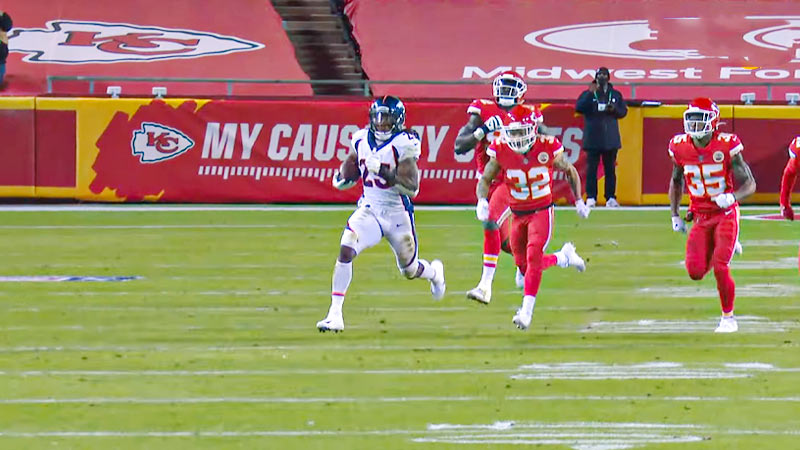Football, a sport that resonates with the heartbeat of fans around the world, is a beautiful blend of strategy, athleticism, and teamwork. Among its many intricate facets, rushing stands as a fundamental yet exhilarating component of the game.
In this blog post, we delve into the world of rushing in football, uncovering its meaning, significance, and the dynamics it brings to the field.
Whether you’re a seasoned fan or a newcomer to the sport, these frequently asked questions will shed light on the essence of rushing and its impact on the gridiron battles. Stay focused.
What Does Rushing Mean In Football
In football, rushing refers to a fundamental offensive play where a player carries the ball while moving forward on the field. This maneuver involves the ball being handed off or tossed laterally to an offensive player who then proceeds to advance with the intent of gaining yardage.
Typically, rushing plays are executed by running backs or quarterbacks, aiming to bypass the defense and secure additional yards. While rushing primarily entails running plays, any offensive tactic that doesn’t involve a forward pass is considered a rush, also termed a run.
The objective of rushing is to outmaneuver the opposing defense by exploiting gaps and creases in their formations. Successful rushing plays contribute significantly to a team’s offensive strategy, providing opportunities to control the pace of the game, maintain possession, and create scoring chances.
Why Running Backs Rush the Most in Football?
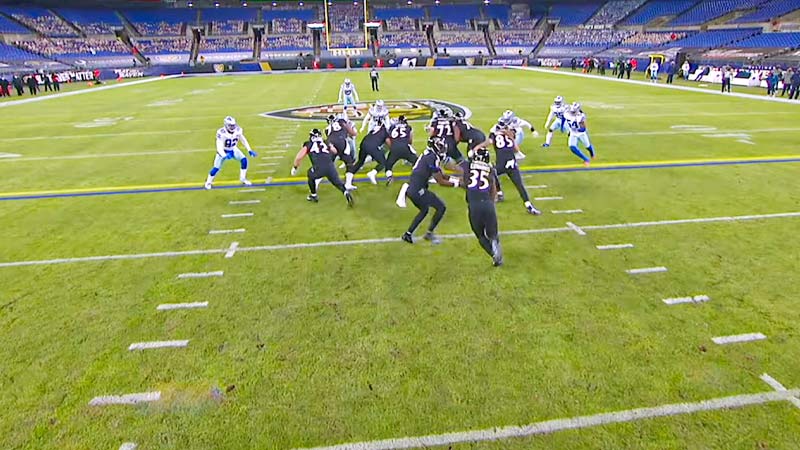
Running backs often rush the most in American football due to their specialized skills and the strategic importance of their role in the game.
Running backs are positioned in the offensive backfield and are primarily responsible for carrying the ball during rushing plays. Several factors contribute to their high frequency of rushing:
Gain Yardage
Running backs are skilled at evading defenders, finding gaps in the defense, and gaining significant yardage. Their agility, speed, and vision make them effective at navigating through the defensive line.
Variety of Runs
Running backs execute a variety of rushing plays, such as power runs, sweeps, counters, and draws. This diversity keeps the defense guessing and allows the offense to exploit different areas of the field.
Ball Control
Running backs are essential for ball control and time management. By effectively rushing the ball, they help their team maintain possession, control the game’s tempo, and limit the opposing team’s opportunities.
Wear Down the Defense
Consistent ‘rushing’ wears down the opposing defense over the course of a game. As defenders tackle and engage with running backs, their energy and effectiveness diminish, creating opportunities for other offensive plays.
Short Yardage Situations
In situations where the offense needs to gain just a few yards for a first down or a touchdown, running backs are often relied upon due to their ability to quickly burst through small openings.
Play Action Passing
Effective rushing by running backs sets up play-action passing plays. When the defense is concerned about the run, it creates opportunities for the offense to execute successful passing plays.
Red Zone Efficiency
Running backs are crucial in red zone situations (close to the opponent’s end zone) where there’s limited space for passing. Their rushing ability helps teams score touchdowns in these crucial areas.
What Happens When a Player Rush?
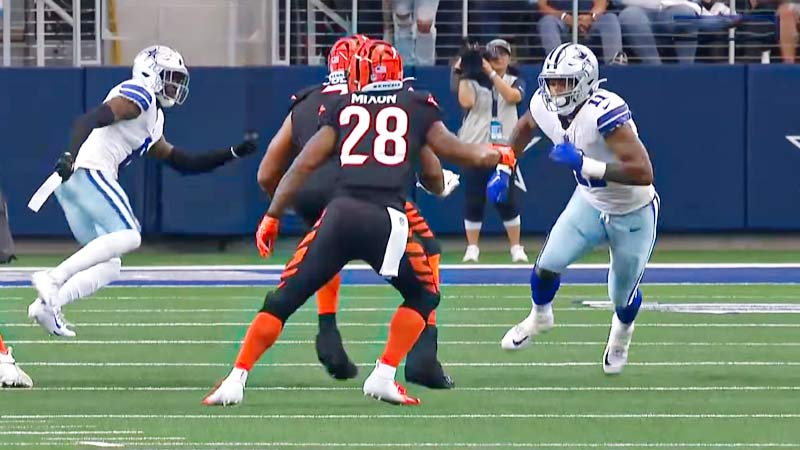
When a player rushes into American football, they carry the ball while running forward with the intent of gaining yardage for their team’s offense. Here’s what happens when a player executes a rushing play:
Handoff or Snap
The play begins with either a handoff from the quarterback or a direct snap to the running back, depending on the offensive formation and the specific play called.
Read and Vision
The running back quickly assesses the field, reads the blocks of the offensive linemen, and identifies potential openings or running lanes in the defensive formation.
Running Forward
Once the ball is in their hands, the running back accelerates and heads toward the line of scrimmage. They aim to follow the designed path or find gaps in the defense to exploit.
Evading Defenders
The running back uses their agility, speed, and vision to maneuver through or around defenders. They may use techniques like jukes, spins, stiff arms, and quick changes of direction to elude tacklers.
Gaining Yardage
The primary objective of the rushing play is to gain as many yards as possible. The running back aims to move the ball forward, ideally crossing the line of scrimmage and advancing downfield.
Blocking Support
Offensive linemen and other blocking players create paths for the running back by engaging with defenders and creating spaces. Tight ends, fullbacks, and wide receivers may also contribute to blocking.
Yardage Accumulation
The running back continues to move downfield, accumulating yardage until they are tackled by defenders or run out of bounds. The distance gained contributes positively to the team’s offensive progress.
First Down or Scoring Opportunity
If the running back gains enough yardage to move the chains beyond the first-down marker, the offense gets a fresh set of downs. In the red zone (near the opponent’s end zone), successful rushing plays can lead to scoring opportunities, either touchdowns or field goals.
Down and Distance Impact
The success of the rushing play influences the upcoming down and distance. If the running back gains significant yardage, it sets up more manageable second or third downs. Conversely, minimal yardage can lead to longer distances to gain for a first down.
End of Play
The play ends when the running back is tackled by a defender, steps out of bounds, or scores a touchdown. The next play is determined by the result of the previous rushing play, along with the offensive strategy and game situation.
Statistics of Rushing in Football
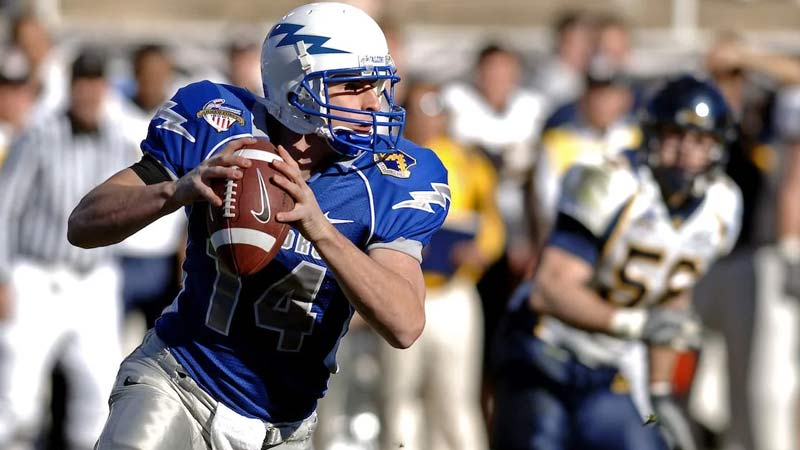
Rushing statistics in football provide insights into the effectiveness of running plays, the performance of running backs, and the overall ground game of a team. Here are some key rushing statistics commonly used in football analysis:
Rushing Attempts (Att)
The total number of times a player or team attempts a rushing play during a game or season. It indicates how frequently the team relies on running plays.
Rushing Yards (Yds)
The total yardage gained by a player or team through rushing plays. It reflects the success of the ground game in terms of advancing the ball.
Yards Per Carry (YPC)
Calculated by dividing rushing yards by rushing attempts. YPC indicates the average distance gained per rushing attempt and provides insight into the efficiency of individual runners or the team’s rushing attack.
Longest Rush
The longest single rushing play during a game or season, measured in yards. It demonstrates the big-play potential of a running back or the team’s ability to break through the defense.
Rushing Touchdowns (TD)
The number of times a player or team scores a touchdown through rushing plays. It highlights the running back’s ability to find the end zone and the team’s effectiveness in short-yardage and red-zone situations.
Stuff Percentage
The percentage of rushing attempts that result in no gain or a loss of yards due to the defense “stuffing” the play. A lower ‘stuff’ percentage indicates the effectiveness of the offensive line and the running back’s ability to avoid tackles at the line of scrimmage.
Broken Tackles
The number of times a running back breaks through attempted tackles by defenders. It indicates the runner’s elusiveness and ability to gain additional yards after initial contact.
First Down Percentage
The percentage of rushing attempts that result in a first down. This metric measures the ability of the running game to move the chains and sustain drives.
Rushing Distribution
The distribution of rushing attempts among different players on the team. It shows how the workload is divided among various running backs or even quarterbacks.
Rushing Success Rate
This advanced statistic measures the percentage of rushing plays that result in a successful outcome, typically defined as gaining a certain percentage of yards needed to convert a first down based on the down and distance. It provides a more nuanced assessment of rushing effectiveness.
Benefits of Rushing In American Football
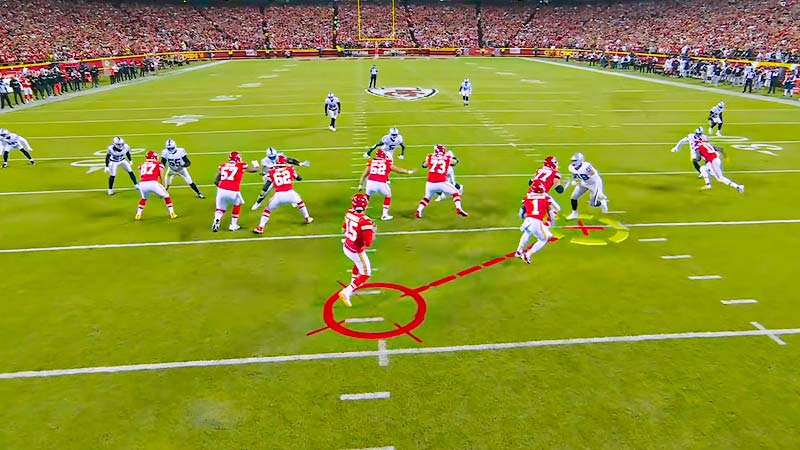
Rushing plays, which involve carrying the ball forward on the ground, offer several key benefits in American football. These advantages contribute to a team’s offensive strategy and overall success in the game:
Ball Control and Time Management
Rushing plays allow a team to control the clock and possess the ball for longer periods. This limits the opponent’s opportunities to score and keeps their offense off the field, which can be crucial for maintaining a lead or managing game momentum.
Wear Down the Defense
Consistent rushing puts pressure on the opposing defense. As defenders tackle running backs, they exert energy and become fatigued, potentially opening up opportunities for other offensive plays as the game progresses.
Balanced Offense
A strong rushing attack complements the passing game, creating a balanced offensive strategy. This balance makes it harder for the defense to predict the offense’s next move, leading to more effective play-calling.
Play Action Passing
Effective rushing sets up play-action passing plays. When the defense is focused on stopping the run, play action can deceive defenders and create openings for deep passing plays.
Short Yardage Situations
In situations where the offense needs to gain just a few yards for a first down or a touchdown, rushing plays are often reliable and effective. A skilled running back can navigate tight spaces and move the chains.
Red Zone Efficiency
In the red zone, where the field is shorter and passing becomes more challenging, rushing plays can be highly effective. Running backs can exploit small openings and score touchdowns.
Managing Game Pace
Rushing plays allow teams to dictate the pace of the game. By controlling the clock and moving methodically down the field, rushing can slow down the game and frustrate opponents.
Field Position Advantage
Successful rushing plays can improve a team’s field position. This makes it easier for the offense to score points and forces the opponent to start their offensive drives from less favorable positions.
Ball Security
Rushing plays generally involve fewer turnovers compared to passing plays. Running backs are less likely to fumble the ball compared to quarterbacks attempting passes.
Maintaining Lead
In situations where a team has a lead, rushing plays help eat up the clock and limit the opposing team’s chances for a comeback. This strategic use of rushing plays can help secure a victory.
Changing Weather Conditions
Rushing plays are especially valuable in adverse weather conditions like rain or snow, where passing accuracy can be affected. Ground-based plays are generally more reliable in such situations.
Drawbacks of Rushing In Football
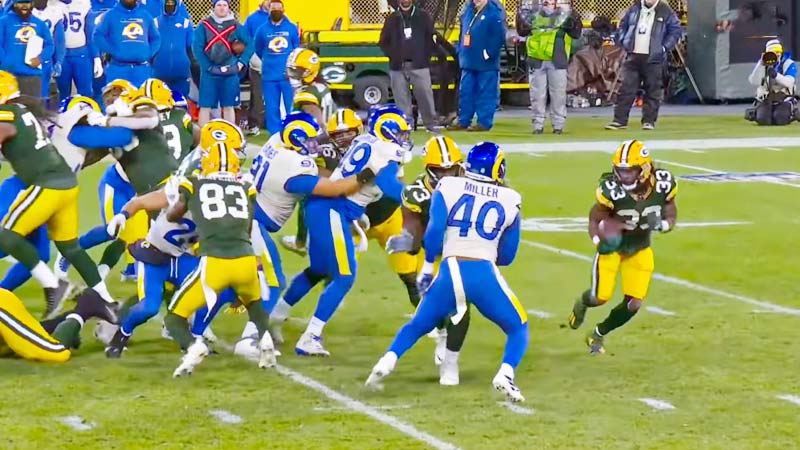
While rushing plays have their benefits, there are also several drawbacks associated with relying too heavily on the running game in football. These drawbacks can affect a team’s offensive strategy and overall success:
Predictability
A consistent reliance on rushing plays can make an offense predictable, allowing the defense to stack the box with defenders and anticipate the run. This makes it easier for the defense to stop or limit rushing gains.
Limited Big Plays
Rushing plays typically have a lower potential for big, explosive plays compared to passing plays. This can make it challenging to quickly gain large chunks of yardage and score quickly.
Inefficient in Comeback Situations
When a team is trailing and needs to catch up quickly, rushing plays might not be the best option. Running the ball takes more time off the clock, which can hinder the offense’s ability to make a rapid comeback.
Injury Risk
Running backs, who are often the primary rushers, can be more susceptible to injuries due to the physical nature of their role. Relying heavily on rushing can increase the risk of key players getting hurt.
Defensive Adjustments
Defenses can adjust their formations and strategies to specifically counter a strong rushing attack, making it harder for the offense to consistently gain yards on the ground.
Lower Yardage Potential
While rushing can be effective for gaining short and moderate yardage, it might not be as effective as passing for gaining larger amounts of yardage in a single play.
Less Effective Against Strong Defenses
A strong defensive line can effectively stop rushing plays, particularly if the offensive line struggles to create running lanes. This can result in a stagnated offense.
Third and Long Situations
If a team frequently relies on rushing and faces third and long situations (needing significant yardage for a first down), it can become challenging to convert these downs since rushing might not be efficient in gaining the necessary yards.
FAQs
What is Rushing in Football?
Rushing in football is the act of an offensive player running with the ball after it is handed or tossed to them laterally. This core element involves starting behind the line of scrimmage and advancing forward with the primary goal of gaining yardage for the offense.
Any offensive play that doesn’t involve a forward pass falls under the category of a rush, often referred to as a run.
Who Typically Executes Rushing Plays?
Running backs and quarterbacks are the primary players involved in executing rushing plays. Running backs possess the agility and speed to navigate through defensive lines, while quarterbacks may execute designed running plays or scramble to gain yardage.
What Strategic Advantages Does Rushing Offer?
Rushing plays offer several strategic advantages, including ball control, wearing down the defense, balanced offensive strategies, effective short-yardage gains, and successful red zone efficiency.
These benefits contribute to managing the game’s pace, maintaining leads, and creating opportunities for play-action passing.
How Does Rushing Impact the Team’s Offensive Strategy?
Rushing, when effectively incorporated into an offensive strategy, provides a balanced approach that keeps the defense guessing. It complements the passing game, opens up play-action opportunities, and controls the clock, contributing to a more dynamic and unpredictable offense.
What Are Some Drawbacks of Overemphasizing Rushing?
While rushing plays offer numerous benefits, an overemphasis on the running game can lead to predictability, limited big-play potential, and difficulties in adapting to various game scenarios. Finding the right balance between rushing and passing is essential for a well-rounded offensive strategy.
Wrapping Up
In the intricate tapestry of football, rushing serves as a cornerstone that both enthusiasts and players appreciate.
From the exhilaration of a breakaway run to the tactical finesse of gaining crucial yardage, rushing plays an indispensable role in shaping the outcomes of games.
As we’ve journeyed through the meaning, impact, and considerations of rushing in football, we’ve gained a deeper understanding of how this aspect adds excitement, strategy, and unpredictability to the gridiron battles we love. Best wishes.

